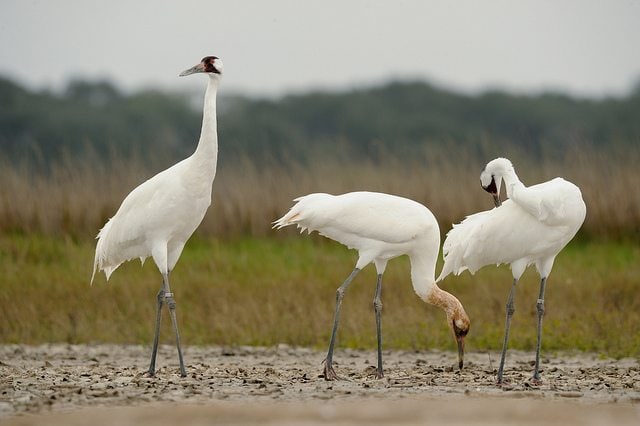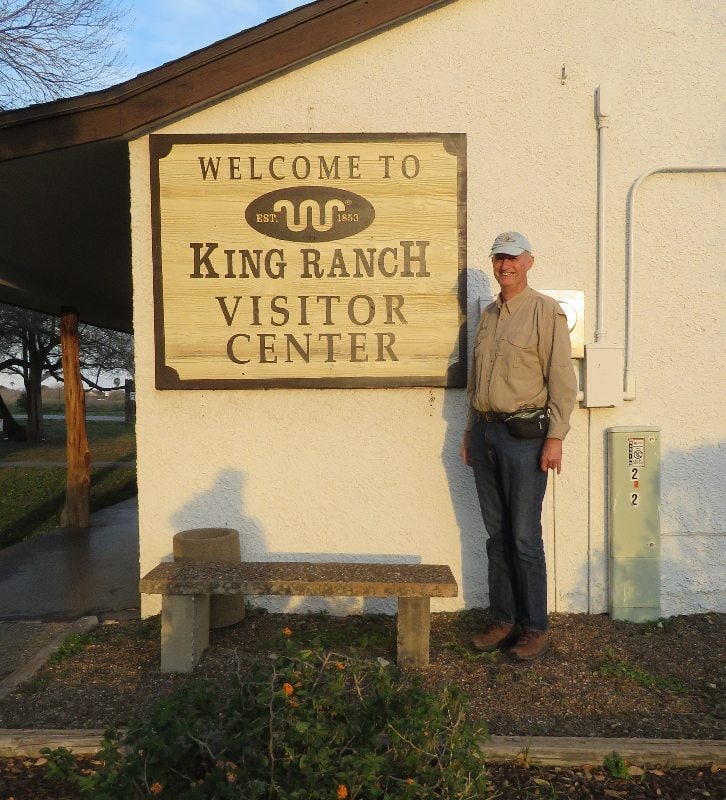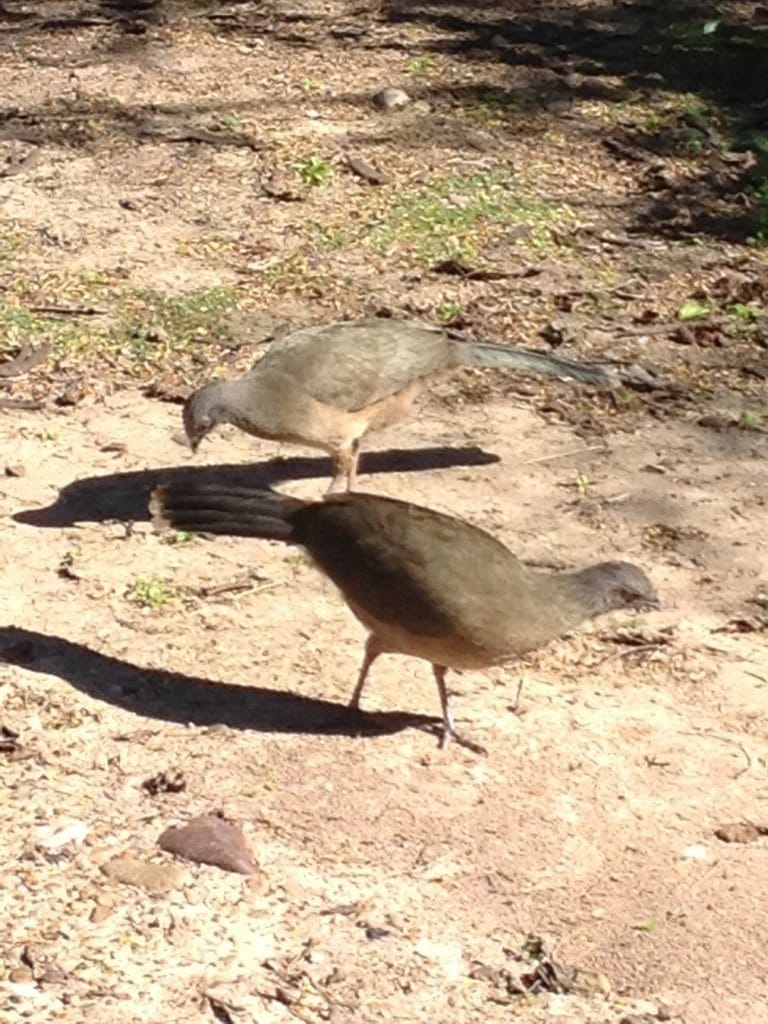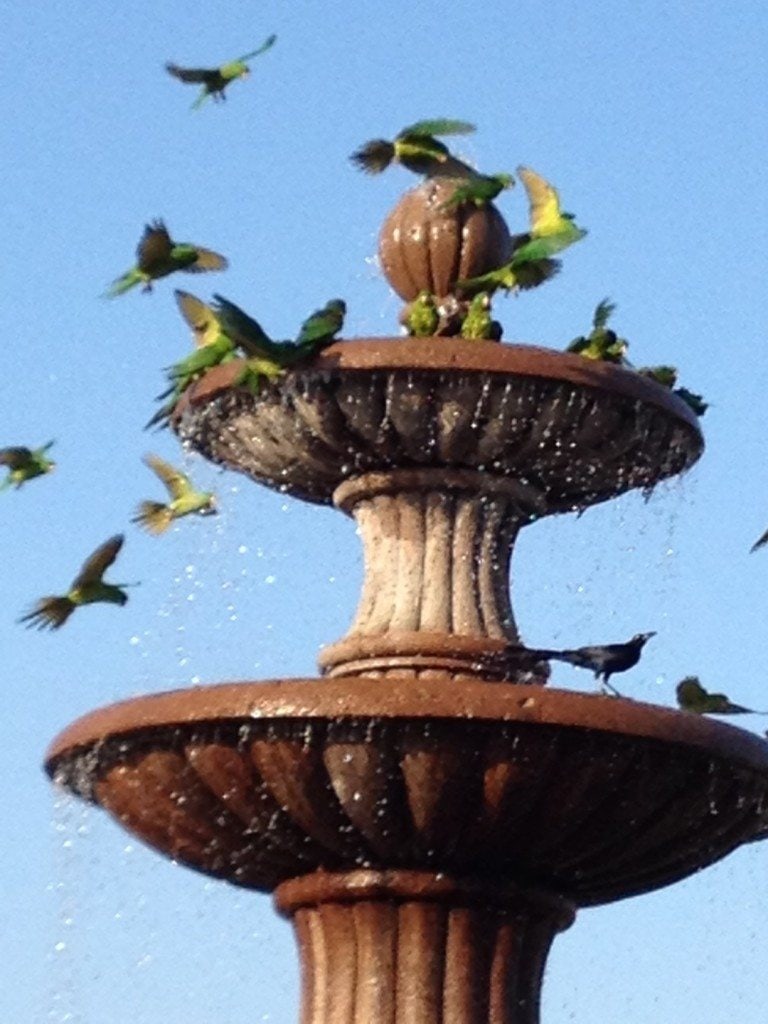Lani’s Big Year goes to South Texas
By George Peyton
South Texas is a great place to bird, particularly for a Big Year, since it has a number of bird species that are either difficult or impossible to find elsewhere in the United States, from easy-to-find birds like Green Jay or Plain Chachalaca to difficult-to-find species such as Hook-billed Kite.
As part of the Big Year being attempted by my better half Lani Rumbaoa, we spent ten full days birding South Texas in mid-February. We started by taking the Wharf Cat, a catamaran, from Rockport, with the primary goal of seeing Whooping Cranes.
The crew always includes a very knowledgeable birder — often the Captain — to point out the numerous birds seen during the four to five-hour cruise around Aransas National Wildlife Refuge. And because the Wharf Cat has an upper deck and is a very stable boat, Lani had great visibility, and with our own scope she was able to see six or seven family groups of Whooping Cranes, some quite close.
A very endangered species, Whooping Cranes rebounded from a low of just 15 individuals in the 1940s to the current population of about 600 birds, thanks to a heroic restoration effort that is still going on. The tallest bird in North America, Whooping Cranes are pure white with a dark red crescent on the face. They were absolutely magnificent to watch as they slowly stalked their prey, small crabs, in the Texas marshes.



We spent most of the next day on a guided bird tour on the King Ranch led by Jim Sinclair, very tall (6 feet 8 inches) and very slim, with an Oklahoma/Texas drawl, and an excellent bird leader. Jim spent many years in the Navy and during a long stay in San Diego saw over 400 species in San Diego County alone — obviously an avid birder.
While we unfortunately could not go to the southern part of the King Ranch where the Ferruginous Pygmy Owl is found (that area was not opening up until approximately a month after we left), Jim tailored our birding to find new species for Lani’s Big Year List. He had the patience to spend over two hours driving the short grass strips on either side of the ranch roads to finally locate Lani’s top Target Species for the day, a Sprague’s Pipit, which is very difficult to find anywhere in the U.S. Lani had great views at a distance of about 25 feet for over five minutes. I would highly recommend Jim Sinclair as your bird guide on the King Ranch.
A little about our birding routine: Getting up and out early is always important, since normally the best birding is in the earlier morning hours. Since it did not start getting light in South Texas until about 6:45 a.m., I was always up no later than 5 a.m. and after my shower, I started working on getting Lani out of bed. ( Lani is not naturally a morning person, so this is not an easy task.) Usually, we arrived at our first birding location by 7 to 7:15 a.m., before many of the birds were up and moving.


During the first three to four days we birded 10- to 12-hour days, but Lani and I both started getting tired by 3 or 4 p.m, so we decided to head back to our motel every few days for several hours in the mid-afternoon instead of pushing on until dark, That allowed us to bird during the most active period for the birds, but still pace ourselves with a few extra hours of rest, particularly since mid-afternoon tends to be the low point in bird activity. However, not infrequently we would go out birding for several hours after our rest, which was just when bird activity was picking up again.
Following that pattern in the Lower Rio Grande Valley, we took advantage of the best time to see parrots — the late afternoon not too long before dusk, when they come in to roost. We spent five late afternoons searching for Red-crowned Parrots and Green Parakeets, the two main “countable” parrot species in the LRGV per the latest American Birding Association Checklist. (We actually also found Monk Parakeets at a large communal nest on a telephone pole.)
Our first effort at two spots in Harlingen, Texas, was a total bust. No parrots showed. So the next day we went to Olivera Park in Brownsville, and what a bonanza! We found not only Red-crowned Parrots (countable), but four other species of Amazonas parrots: Red-lored, Lilac-crowned, Yellow-headed, and White-fronted. They were often close to each other, allowing us to compare field marks, and frequently “staged” on telephone lines in large numbers (we saw at least 250 individual birds!) before flying into trees to roost for the night.
The next two nights we tried to locate Green Parakeets in the late afternoon in the town of McAllen, based on information from the Lower Rio Grande Valley Rare Bird Alert. This was a very commercial area full of large chain and big-box stores with heavy commuter traffic constantly riding our bumper — not where you would expect to see parrots. We spent about an hour each evening cruising around the streets listening and looking, but we saw not one Green Parakeet.
The following day was our last birding day in the Lower Rio Grande Valley. While waiting for the fourth time to see the rare White-throated Thrush (more on that in a future blog post), I mentioned our Green Parakeet problem to a very good local birder. She listened carefully and said our problem was that we were going too late, since Green Parakeets stage at least a half hour earlier than Red-crowned Parrots and had flown off to roost before we arrived.
She told us to go right back where we had been, but arrive no later than 5 p.m. and park beside a substantial three-tiered fountain in a large shopping mall. We arrived a little before 5 p.m. and as we parked just 25 feet away from the fountain, Lani spotted Green Parakeets on a nearby telephone line. They started to fly to the fountain in small flocks of 25 to 30, bathing, drinking, and rough-housing with each other. Every few minutes a new flock would fly in — one flock after another until at least several hundred birds in all had bathed. It was an amazing show! And as the local birder had predicted, all of those Green Parakeets totally disappeared by 5:20 p.m., just 10 minutes before we had arrived on the two previous evenings.

The moral to this story: Listen carefully to local birders and make a point of seeking advice from them, which you can often do in the field by just walking up and starting a conversation. Most birders are very happy to share information, particularly with birders from outside of the area.
Since Lani has returned to the Bay Area, she has added twenty more species, including Nelson’s Sparrow and Brown Booby, so her Big Year total is now up to 328. Based on her original goal of identifying at least 600 species during 2015, that means she is now a bit over halfway toward her goal. Granted that many of those first 328 species are fairly easy to find, she is still in a better position early on than she or I had imagined.
A big boost to Lani’s recent additions to her Big Year List was joining a Golden Gate Bird Alliance field trip on March 21-22 to the Honey Lake and Eagle Lake areas based out of Susanville, California, very ably led by Dave Quady. Dave is not only an excellent birder, but also an excellent teacher who explained both the field marks of the birds being seen, and many facts and stories about the special birds we were seeing.
With Dave’s expert leadership, Lani added 11 new species to her Big Year List, including Greater Sage-Grouse doing their mating displays on a lek at dawn, Prairie Falcon, White-headed Woodpecker, and a special bonus bird, Northern Pygmy-Owl — really tiny for an owl — which Dave attracted by imitating its call. We were able to to see it well for over 10 minutes.

It is always important to remember that with all of the new birds you can see in other parts of the United States, there is no better state in which to see a huge variety of bird species than California. Having an expert bird leader like Dave Quady to ferret out the difficult-to-see species only increases your chances of seeing even more species in California. There is no place like home.
———————————————
This is the third in a series of occasional blog posts by GGBA member George Peyton about his other half Lani Rumbaoa’s effort to see over 600 bird species in the Lower 48 states in 2015. George Peyton practiced law for 44 years, dividing his time between a private practice and work as Piedmont City Attorney. He has served on the boards of Golden Gate Bird Alliance, Point Blue (formerly PRBO), Audubon Canyon Ranch, and National Audubon. He played a leading role in National Audubon’s work to save Mono Lake. He has been an active birder for 66 years and seen about 6,500 bird species. Click here to read his initial blog post about Lani”s big year.
